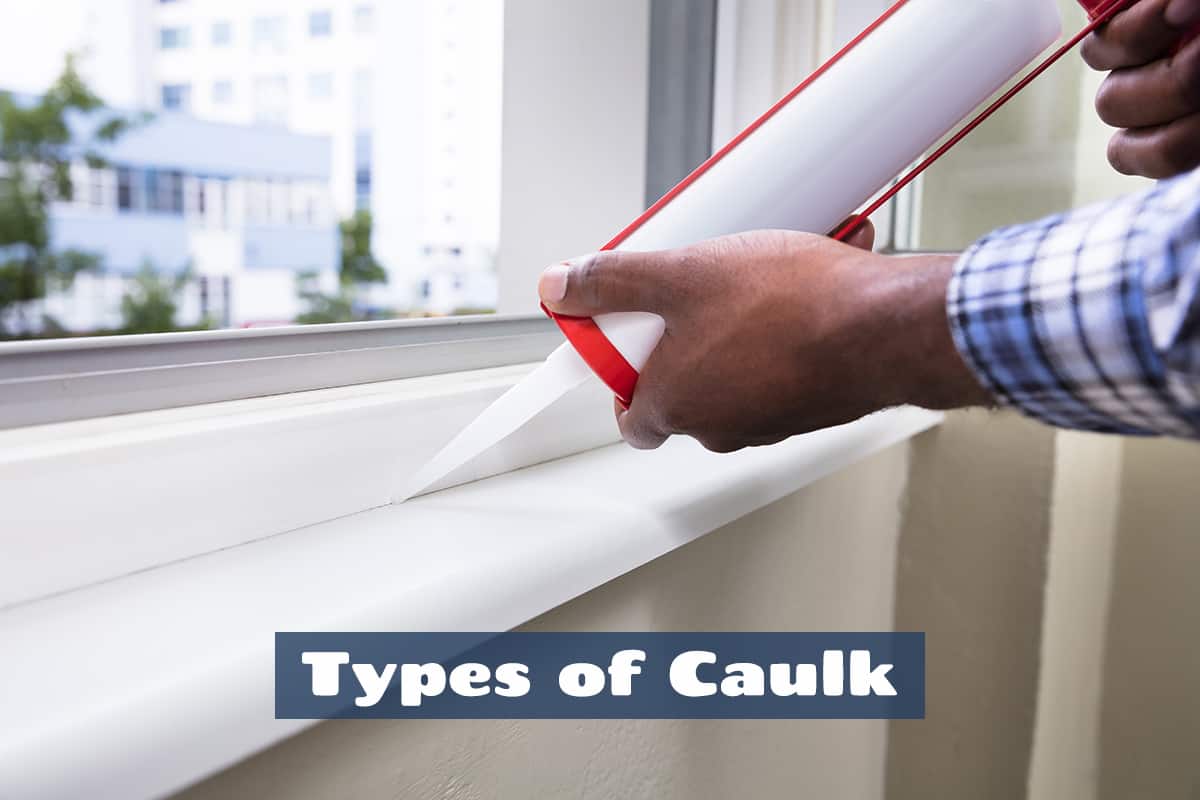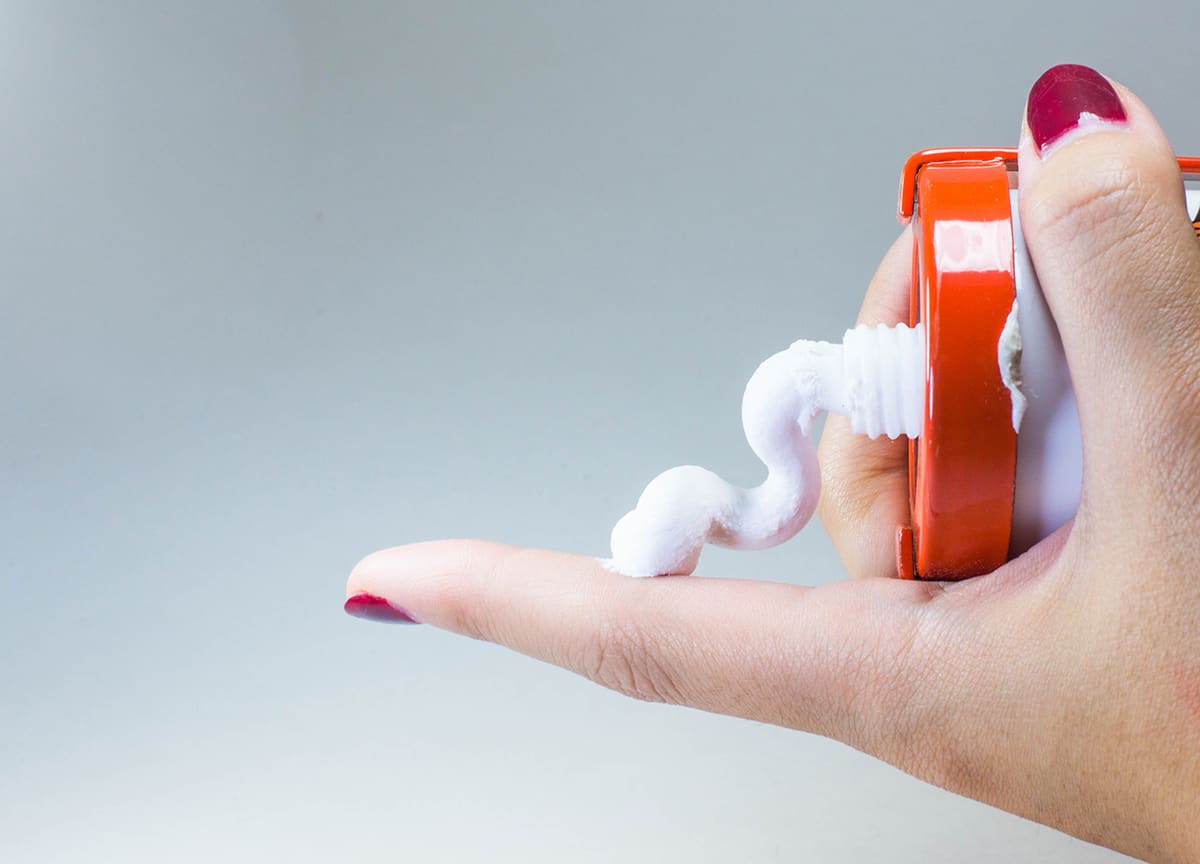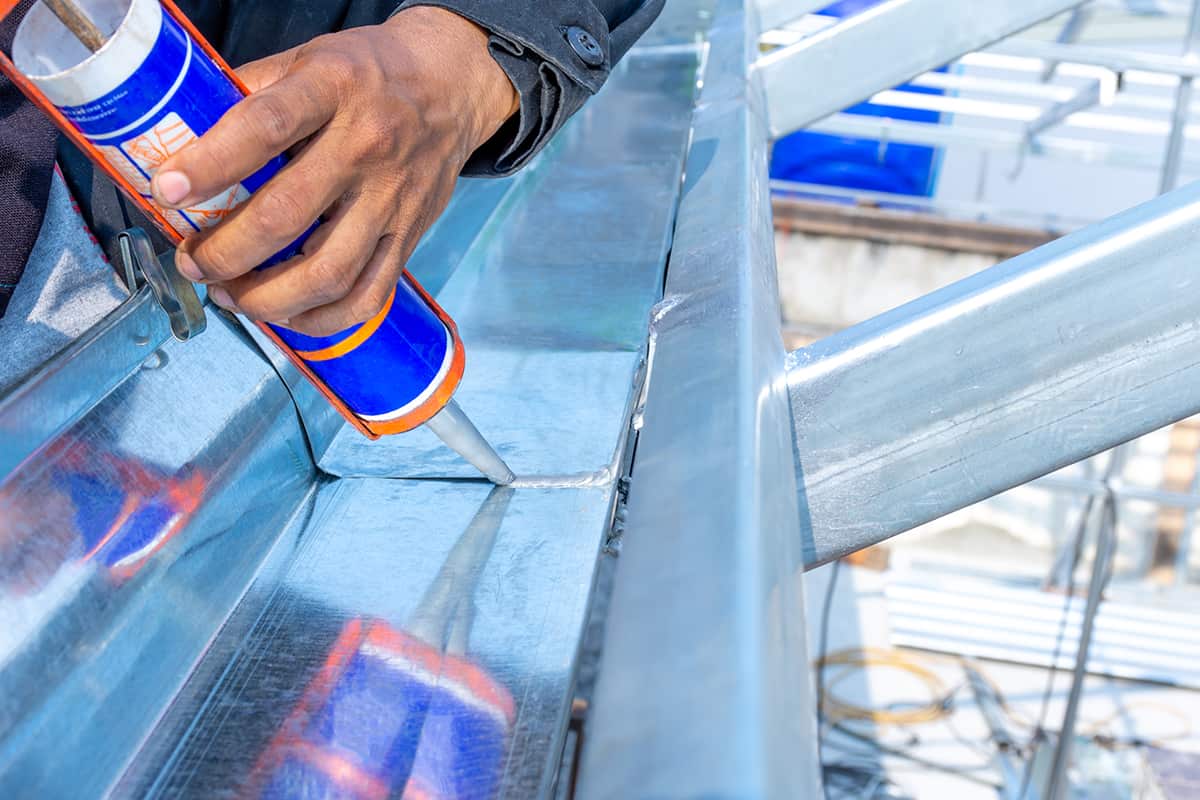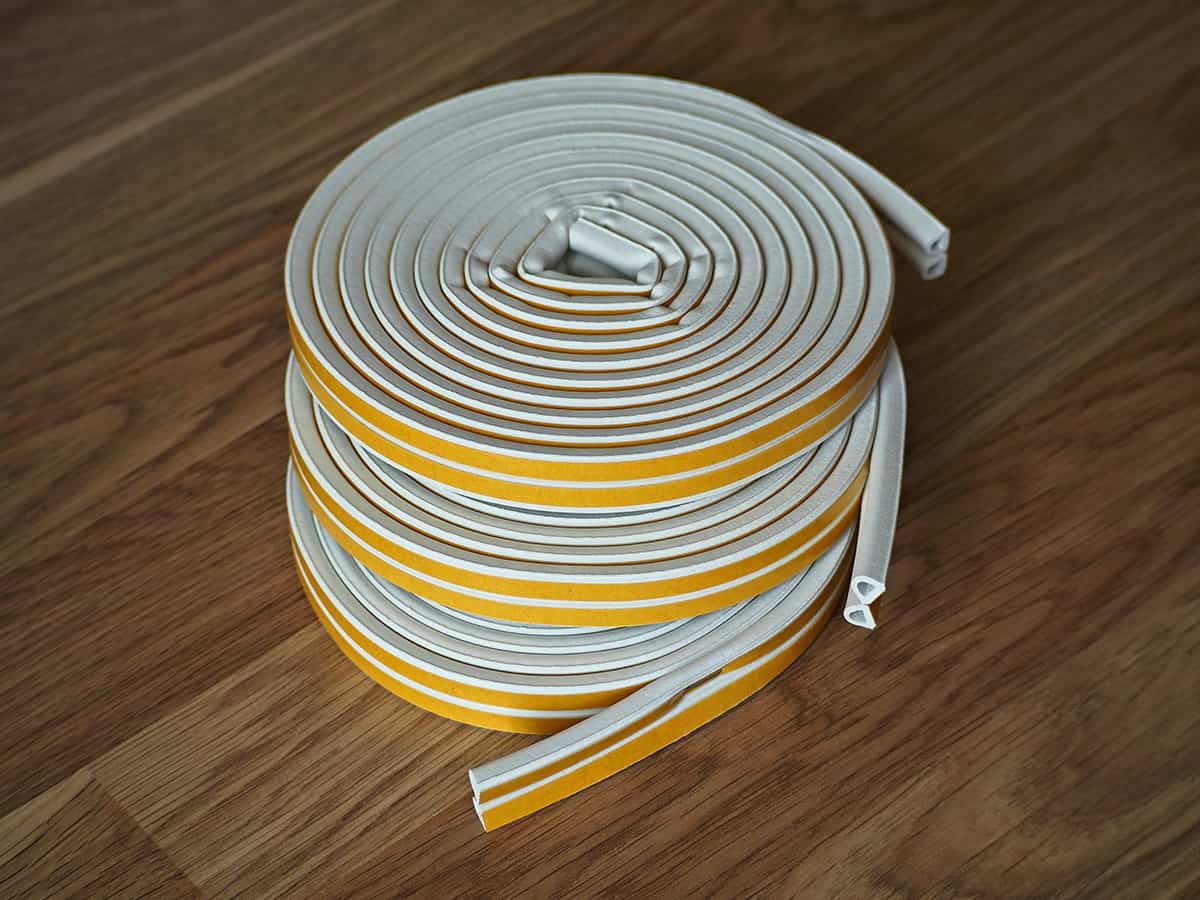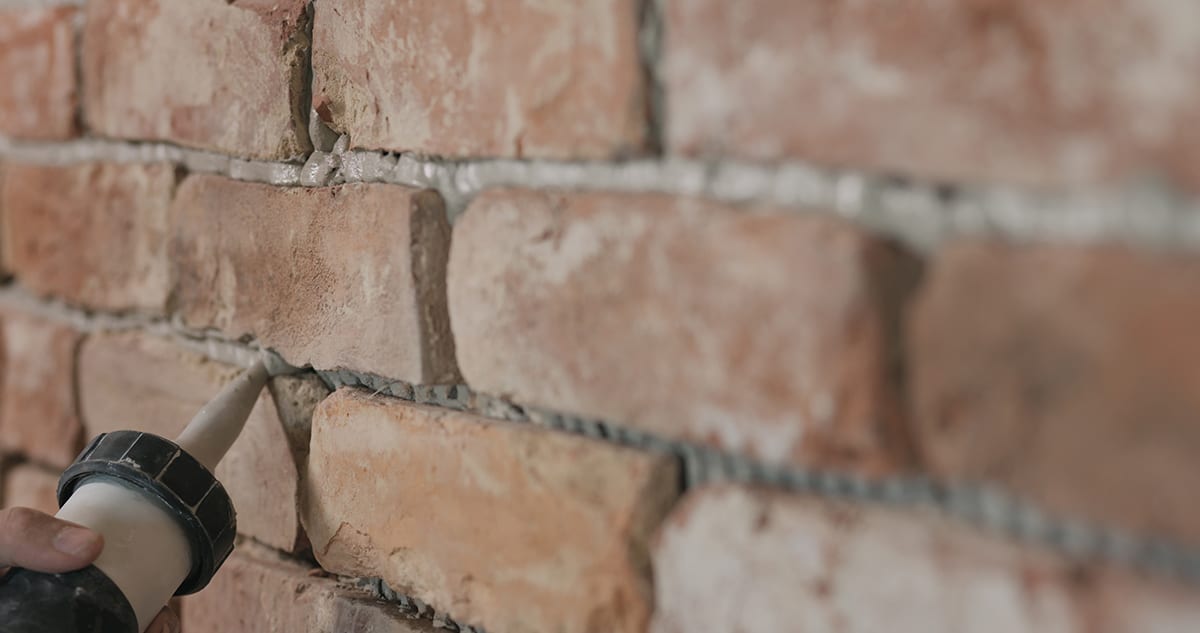Caulk is a sealant commonly used in home renovation projects, especially in bathrooms and kitchens. It helps seal the gaps around fixtures to make them watertight, for example around the edge of a bathtub or a kitchen sink. Caulk can also be used to create a neat line to give a more professional finish.
If you’re getting stuck into a home renovation project, you’ll need some caulk at some point. Here we explore the different types of caulk and what scenarios they are best for, and we also investigate whether caulk is better than sealant.
Types of Caulk
Caulk is usually made from a mixture of acrylic and latex, but you can also find caulk that is made with one ingredient and not the other. Standard caulk will have quite a low level of elasticity, and this is where caulk and sealant differ.
Sealant has a much higher level of elasticity, making it more suitable for use in areas that might expand or contract in varying climate conditions. It is the silicone that gives sealant its elasticity, and although some caulks also use silicone as part of their mixture, silicone caulk is still not as elastic as silicone sealer.
Acrylic Latex Caulk
Standard caulk is made from a combination of acrylic and latex. This is best used in areas of the home that aren’t subjected to moisture because it isn’t waterproof or moisture-repellant. For this reason, don’t use it in the bathroom or kitchen, and instead, choose acrylic latex caulk for filling gaps in woodwork and trim in the living room and bedrooms.
Acrylic latex caulk is among the easiest types of caulk to use because it can be cleaned up with water. This means if you aren’t the neatest at applying the caulk you don’t need to worry- just wet a cloth with water and wipe over the caulk to tidy up any lumps or excess.
One of these great things about acrylic latex caulk compared with other types of caulk is the fact that it can be painted. This means you don’t need to be concerned about the color because you can paint right over it so that it blends in with your trim or wall color. Because acrylic latex caulk can be painted, you can camouflage it more easily if your application isn’t particularly neat.
Acrylic Silicone Caulk
If you need your caulk to offer a little moisture resistance, then choose an acrylic-based caulk with added silicone. These might be sold under the description of ‘siliconized caulk’ or ‘caulk plus silicone’. Acrylic silicone caulk isn’t as moisture repellent as pure silicone caulk, but it’s a good compromise between standard acrylic caulk, which offers no moisture resistance, and silicone caulk, which is fully moisture resistant.
Acrylic caulks with added silicone are useful for areas of the home where some moisture resistance is needed, but full waterproofing isn’t necessary. A good example of this would be around the kitchen backsplash, or in a laundry room. The addition of silicone not only makes the acrylic caulk more resistant to water but also makes it more elastic. This means if there is some movement, the caulk won’t crack but instead will adjust.
For example, if you caulk around a kitchen sink you may find that the sink moves slightly lower when it is filled up with heavy water. If the caulk does not have good elasticity, it might crack, but elastic caulk with silicone will be more forgiving. The addition of silicone to acrylic latex caulk will also improve the adhesion qualities, helping it to stick in place.
Silicone Caulk
Silicone caulk should be the caulk of choice for sealing around any plumbing fixture. This is because it is waterproof and resistant to mold growth, making it ideal for use in rooms with increased moisture content. Silicone caulk is also resistant to fading or discoloration, so it will help to keep a room looking newer for longer.
You can use this caulk to effectively seal around shower trays, toilets, sinks, backsplashes, and faucets. It is highly adhesive so it will stay in place to keep any gaps sealed and prevent moisture from seeping through, and it is also very elastic so it will move with any slight movement of the fixtures.
One of the drawbacks of using a silicone-based caulk is that it can be quite messy. Unlike acrylic-based caulks which will be wiped away with a wet cloth during application, silicone caulks are sticky and difficult to clean up. You’ll need to be extra careful during application not to get too messy with the caulk, and you should have a solvent-based cleaner on hand to clean up.
Polyurethane Caulk
Caulk or sealants made from polyurethane are exceptionally hardwearing, so they’re widely used in commercial buildings, for example in the construction industry, the automotive industry, and the engineering industry.
Polyurethane caulk cures very quickly into a hard surface which can then be sanded down, so it’s widely used by joiners in carpentry to seal joins or cracks. Polyurethane is an organic substance, while silicone is made from both organic and inorganic compounds.
Fireproof Caulk
Fireproof caulk, also known as refractory caulk or refractory sealant, is a type of caulk that is resistant to heat and fire. This is a useful caulk to use when sealing gaps or cracks between walls and floors because it will not lose its integrity when faced with a house fire or gas leak.
Using a fireproof caulk can give you an extra layer or protection against the prospect of a house fire, which in turn can give you added peace of mind.
Types of Sealant
Butyl Rubber Sealant
Butyl rubber sealant has superior elasticity, making it ideal for filling or sealing cracks and joints that may shift, expand and contract.
Butyl rubber sealant is suitable for use outdoors because it is extremely durable and weather-resistant. It is commonly used to repair or fill cracks in metalwork or masonry on the exterior of properties.
Masonry Repair Sealant
Masonry repair sealant, as you may have guessed, is intended for use on masonry. It is useful for sealing or filling cracks on exterior masonry walls, but it has more uses than this.
Masonry repair sealant can be applied to cracks in driveways or other concrete surfaces such as sidewalks, to repair and fill. Masonry repair sealant is very flexible, making it a good choice for areas that are prone to expansion and contraction.
What is the Difference Between Sealant and Caulk?
Caulk and sealant are both products you’ll find at the hardware or DIY store. They are used predominantly to seal surfaces or fill cracks, but they have different qualities. The primary difference between sealant and caulk is the elasticity. This refers to how much the product can physically adjust, even once set.
Caulk is the least elastic out of caulk and sealant, and it can be prone to shrinking or cracking, especially if used to fill cracks on areas that are likely to contract or expand under temperature changes. Sealant offers much better elasticity, which means it is well suited to use on areas that might settle or have some movement.
An elastic product like sealant will move with the movement of the surface it is attached to, preventing the need for the job to be repaired again in the future.
Another key difference between sealant and caulk is water resistant. Sealants are typically water-resistant or waterproof, while caulk has a much lower resistance to water. If you’re sealing gaps in a bathroom or an area where there will be a lot of moisture, then a sealant or sealant-caulk hybrid will be your best option.
Caulk and sealant are both easy to use if you’ve had some practice, but if you’re a beginner at using these products, you’ll likely find caulk much simpler to get the hang of.
It isn’t as sticky or messy as a sealant, and if you do get the caulk in places you hadn’t intended to, you can just wipe it away with a wet cloth before it dries. Sealant, on the other hand, can be quite messy. It will need to be cleaned up with a solvent-based cleaner if you find that your application needs to be touched up.
Caulk can be painted over, while sealant cannot because it has a more glossy finish that paint won’t adhere to. This makes caulk the best choice if you’re filling a crack that will need to be painted over. If you need to use sealant for its other qualities, you can opt for sealant in a specific color to help it blend into the surface you’re using it on.
Is Caulk Harmful?
Caulk is at most, a mild irritant. It is perfectly safe to use around children and pets in the manner it is intended. The odor of caulk can be irritating, but breathing in the fumes will not cause any adverse effects. Caulk should not be consumed, but in the event that caulk is swallowed, it will likely just cause a tummy ache.
